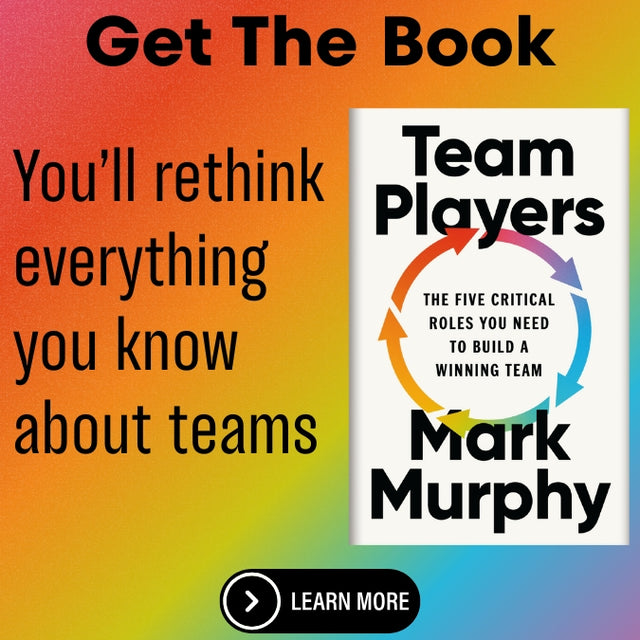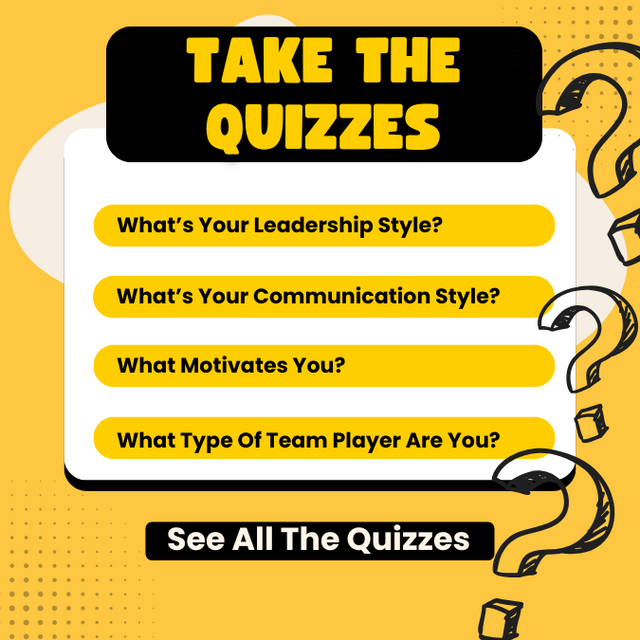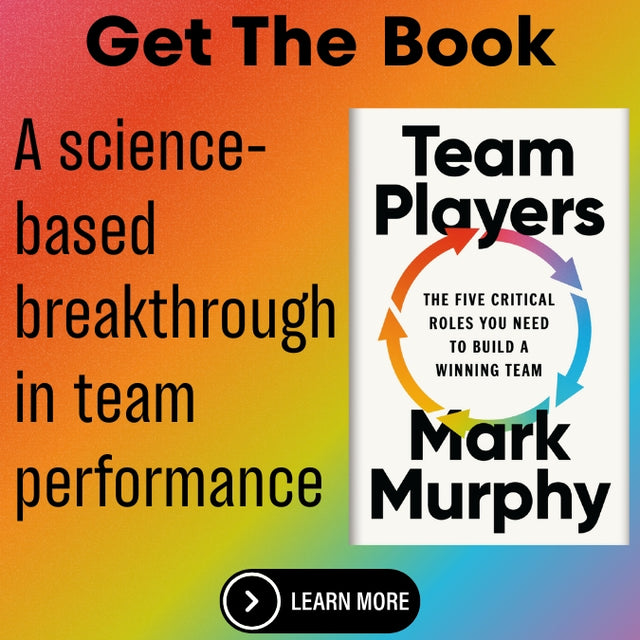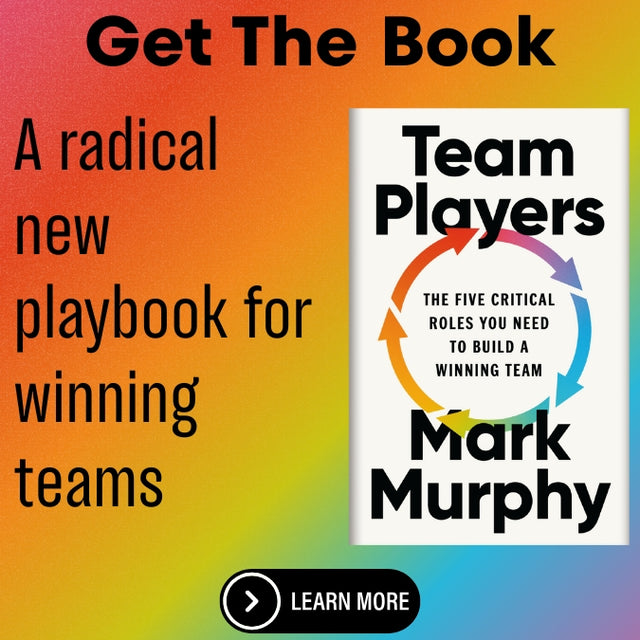Cultivating a Teamwork Mindset
Cultivating a Teamwork Mindset
Science, Strategies and Practices for HR and Business Leaders
Introduction
In an era of accelerating change and digital disruption, long-term business success depends on more than individual talent. It requires a teamwork mindset—a shared way of thinking where employees view their efforts as interdependent, embrace collective responsibility and continually adapt to challenges together. The teamwork mentality differs from superficial team building because it embeds a collaborative spirit into how people perceive problems, share information and make decisions. Understanding the advantages and disadvantages of teamwork helps leaders create environments where the benefits outweigh potential drawbacks. This report synthesizes contemporary research on team mindsets, collective motivation and cohesion, drawing from organizational psychology, education, healthcare and team science. It is designed for business leaders and human-resources professionals seeking evidence-based methods to cultivate a positive team culture that boosts performance, well-being and innovation.
This report first defines the teamwork mindset and related concepts, distinguishing it from individual mindsets and explaining how shared mental models underpin effective teams. It then reviews scientific findings on team growth mindset, shared mental models, psychological safety, collective efficacy and synergy, integrating recent studies from 2024–2025. Subsequent sections translate these insights into practical strategies—leadership behaviours, communication norms, conflict resolution, trust building and growth mindset interventions—that business leaders can use to foster a collaborative environment. Before diving in, you may want to take our Team Player Quiz to discover your own collaborative style. The article concludes with recommendations for implementing and measuring teamwork mindset initiatives across diverse work settings and includes a comprehensive list of citations.
Understanding the Teamwork Mindset
Defining teamwork mindset, teamwork mentality and shared mental models
A teamwork mindset or teamwork mentality refers to the shared cognitive framework through which team members interpret tasks, roles and interactions. At its core, it involves a collective orientation toward interdependence and mutual responsibility. Unlike a purely individual growth mindset—which focuses on personal development—the teamwork mindset emphasises the shared belief that the group can learn, adapt and improve together. This is distinct from individual collaboration, and leaders should understand the nuances of collaboration vs. teamwork when building their teams. Researchers in strategic alliances define this as a team strategic knowledge mental model—a shared understanding of how team members interact—that positively relates to team performance[1]. Teams with coherent mental models coordinate more effectively because members anticipate each other's actions, communicate efficiently and hold collective efficacy—the belief that the team can achieve its goals.
Shared mental models are cognitive structures that team members develop through interaction. They include knowledge of roles, information flows and strategies. Cognitive psychologists suggest that when teams lack shared mental models, misalignment occurs, leading to coordination failures and underperformance[2]. Conversely, a shared mindset derived from mutual learning values—transparency, curiosity and accountability—guides team behavior and results in more integrative problem-solving[3]. The Team Effectiveness Model for Science (TEMS) uses a mutual-learning mindset as its central element and shows how mindsets lead to behaviours that influence team effectiveness[3]. This model underscores that teams must align their mindset-in-use with their espoused values; otherwise, incongruence undermines trust and performance[4]. Importantly, this mindset is not static; it evolves through collaboration, feedback and reflection.
Growth mindset versus fixed mindset in teams
Psychologist Carol Dweck's theory of growth vs. fixed mindsets has influenced education and leadership development. Individuals with a growth mindset believe abilities can be developed through effort, whereas those with a fixed mindset view abilities as innate. In team contexts, a team growth mindset refers to a shared belief that the group's capabilities can evolve. A 2021 study of 132 innovation teams in China found that team growth mindset positively correlated with team scientific creativity and that team achievement goal orientation mediated this relationship[5]. Moreover, leader behavioural feedback moderated how team growth mindset translated into creative outcomes[6], implying that supportive leadership amplifies growth mindsets.
Recent research expands this concept. In a two-wave survey and intervention study, scholars introduced the notion of a dual-focused growth mindset, encompassing both a growth mindset about the self and about one's work. Findings indicate that employees' self-growth and work-growth mindsets increase resilience and lower mental ill-health symptoms, and an intervention enhancing both mindsets led to higher well-being, job satisfaction and flourishing[7]. These results suggest that team environments where leaders and colleagues encourage continuous learning and improvement—rather than punishing mistakes—can foster resilience and sustain motivation under stress[8].

Team mental models, synergy and collective responsibility
While growth mindset concepts emphasise individual attitudes toward learning, team effectiveness also depends on shared mental models and collective responsibility. A prominent study of strategic alliance teams demonstrated that strategic knowledge mental models positively relate to team performance[1]. Additionally, top management involvement moderated the relationship between team communication and performance[1], highlighting the need for leadership to support shared understanding. The article underscores that teams fail when they lack shared expectations, processes and outcomes[9].
Synergy refers to process gains arising from collaboration, where the collective output exceeds the sum of individual contributions. The synergy literature identifies triggers such as social support, indispensability of team members, diverse perspectives, team learning and social identification[10]. Expected advantages include better information processing, higher creativity, improved decision accuracy and motivational benefits such as commitment and identification[11]. A strong teamwork mindset harnesses synergy by encouraging members to see the value of each other's contributions and to engage in constructive debate.
Collective responsibility and team cohesion further reinforce the teamwork mindset. A network analysis of 1639 nurses across 118 teams found that all dimensions of team cohesion (affective, behavioural and cognitive) were positively correlated with performance measures such as cooperation satisfaction and task performance[12]. The study identified cooperation satisfaction and consistency of affection as core variables and recommended interventions targeting these dimensions to maximise team cohesion[12]. High cohesion fosters a sense of accountability where members feel responsible for the team's outcomes and are motivated to support colleagues. For practical approaches to strengthen these bonds, explore our guide on building a strong teamwork culture.
Importance of communication and conflict resolution
Effective communication and timely conflict resolution are pillars of a healthy teamwork mindset. Research on strategic alliance teams stresses that team communication drives performance, but its effect depends on top management involvement[1]. In healthcare, nurses with strong team cohesion and communication report better quality of care. Scholars emphasise that emotional intelligence and clear communication are essential conflict-resolution skills[13]. Practical steps include inviting colleagues to discuss issues, listening actively, focusing on problems rather than personalities and identifying points of agreement before negotiating solutions[14]. Leaders can also implement communication team building activities to strengthen these skills across the organisation. Clear communication also prevents conflict; managers are advised to avoid relying on email for sensitive conversations, provide feedback promptly and create cultures of civility and trust[15].
Scientific Foundations of a Teamwork Mindset
Shared mental models and team performance
Shared mental models enable teams to coordinate implicitly. The strategic alliance study cited earlier shows that team strategic knowledge mental models improve performance[1]. This relationship is particularly salient when teams face uncertainty or require cross-functional coordination. Shared mental models reduce cognitive load, streamline problem solving and foster collective efficacy—the belief that the group can succeed. The research suggests that leadership involvement, especially from executives, strengthens the link between communication and performance, indicating that organisational support and alignment are crucial[1].
Team perspective taking, trust and reflexivity
Perspective taking is the cognitive ability to consider others' viewpoints and feelings. A 2024 study of 225 college student innovation teams found that team perspective taking, team trust and team reflexivity are positively correlated with collective thriving. The researchers used a chain mediation model showing that team trust and reflexivity separately mediate the relationship between perspective taking and collective thriving and that team trust plays a chain mediating role (perspective taking → trust → reflexivity → thriving). This means that when team members empathise with each other, they build trust, which in turn fosters reflexive practices—collectively reflecting on processes and outcomes. Such a cycle leads to higher energy, learning and creativity. Perspective taking also improves information exchange and problem solving by enabling members to question their own assumptions and integrate diverse perspectives.
Dual-focused growth mindset, resilience and well-being
The dual-focused growth mindset study provides evidence that both self-growth and work-growth mindsets are associated with higher resilience and lower mental ill-health symptoms among employees[7]. In the intervention phase, participants who underwent growth mindset training reported greater well-being, job satisfaction and flourishing than the control group[7]. Resilience mediated the relationship between self-growth mindset and flourishing, indicating that growth mindsets serve as cognitive resources that help individuals cope with stress and bounce back from setbacks[8]. For business leaders, this underscores the importance of fostering learning-oriented environments where employees believe they can improve both personally and in their work roles.

Psychological safety, team learning and effectiveness
Psychological safety—defined as a shared belief that the team is safe for interpersonal risk taking—is foundational for a teamwork mindset. A 2023 study on psychological safety found that team dynamics are significantly impacted by psychological safety, team learning, and team efficacy. The researchers reported positive correlations between work quality and team learning behaviour and between learning behaviour and psychological safety. Teams perceiving higher psychological safety engage more in continuous learning, knowledge sharing and constructive feedback. The study also concluded that psychological safety positively influences team effectiveness and fosters innovation. For a deeper exploration of this critical topic, see our comprehensive guide on psychological safety at work. Leaders can enhance psychological safety by soliciting input, expressing gratitude for feedback and creating an atmosphere of respect.
Team cohesion and performance
Team cohesion encompasses the emotional bonds, shared goals and commitment that hold teams together. The network analysis of nursing teams noted earlier found that edges between team cohesion (affective, behavioural and cognitive) and performance dimensions are all positively correlated[12]. Cooperation satisfaction and consistency of affection were identified as core variables, suggesting that teams should prioritise satisfaction with collaboration and maintaining positive emotions[12]. These findings confirm that cohesive teams not only enjoy working together but also achieve better outcomes. Interventions aimed at strengthening emotional bonds—such as celebrating successes collectively, recognising contributions and cultivating empathy—are therefore critical for nurturing a teamwork mindset.
Mutual learning shared mindset model
The mutual learning (ML) mindset offers a structured approach to teamwork. In the TEMS framework, ML comprises core values—transparency, curiosity, informed choice, accountability and compassion—and assumptions such as the belief that everyone has information and that differences are opportunities for learning[3]. Behavioural norms derived from these values include stating views and asking genuine questions, sharing relevant information, using specific examples, explaining reasoning, focusing on interests rather than positions and jointly designing next steps[3]. This mindset contrasts with a unilateral control mindset focused on being right and winning, which hinders learning and collaboration[16]. By explicitly adopting the ML mindset, teams can align their values, assumptions and behaviours, ensuring that their espoused culture matches their practice[4]. The model emphasises that mindset-in-use, not just espoused values, determines team effectiveness; thus, organisations must engage in reflective practices to identify and shift unhelpful assumptions[4].
Synergy, transactive memory and communities of practice
Synergy arises when collaboration yields outputs greater than the sum of individual contributions. Scholars outline several triggers for process gains: social support, which provides psychological safety; indispensability, where members feel needed; diverse perspectives that stimulate learning; team learning opportunities; and social identification, which strengthens belonging[10]. These triggers lead to advantages such as enhanced creativity, improved decision accuracy and motivational benefits[11]. Leaders can foster synergy by forming diverse teams, encouraging constructive debate and recognising unique contributions.
Transactive memory systems (TMS) are shared systems for encoding, storing and retrieving information across team members. When members know who has expertise, they can access knowledge efficiently, reducing duplication and enhancing innovation. Research on agile teams suggests that TMS and communities of practice—groups sharing a craft or discipline—facilitate knowledge exchange and learning[17]. Communities of practice provide informal forums for sharing lessons learned and building a collective mindset. In virtual environments, TMS relies on digital tools and clear communication norms.
However, leaders must also be aware of cognitive biases that can undermine team decision-making. The Abilene Paradox describes situations where teams make decisions no individual member actually wants, while the herding effect shows how group behavior can lead members to follow the crowd rather than voice dissenting opinions. Understanding these phenomena helps teams maintain authentic collaboration.
Building and Fostering a Teamwork Mindset
Leadership behaviours that model the teamwork mindset
Leadership sets the tone for any teamwork culture. Leaders who model a growth mindset—embracing challenges, seeking feedback and acknowledging mistakes—encourage employees to adopt similar attitudes. A growth-mindset leader emphasises effort over talent and frames failures as learning opportunities. Narrative psychology research suggests that leaders can shape team members' stories by highlighting personal contributions, reframing challenges as growth opportunities and promoting a narrative of inclusion and belonging[18]. When employees see that their perspectives are valued and that they belong, they become more engaged and motivated, fostering collective efficacy[19].
Adaptive leadership also involves facilitating perspective taking, encouraging diverse opinions and being inclusive. Leaders should avoid micromanagement and instead empower teams to make decisions. The team mentality article stresses that leading by example, clarifying goals, and building trust among teammates are key to building a team mentality[20]. Leaders should communicate expectations clearly, help employees understand their roles and responsibilities and maintain a fun, inclusive environment[21]. Recognising group achievements rather than solely individual accomplishments reinforces collective responsibility and motivates members to support each other[22]. For additional research-backed approaches, review our article on evidence-based strategies to foster teamwork.
Developing trust and psychological safety
Trust is a fundamental component of the teamwork mindset. According to trust theory, trust is a bet about how someone will behave in the future. Different forms include anticipatory trust (predicting behaviour), responsive trust (responding positively to trustworthy actions) and evocative trust (acting trustfully to elicit trust)[23]. Building trust involves consistent, reliable actions and open communication. The Harvard Professional & Executive Development article emphasises that emotional intelligence, listening and focusing on problems rather than individuals are critical conflict-resolution skills[13]. Leaders can strengthen trust by following through on commitments, sharing information transparently and addressing conflicts promptly and respectfully[14].
Psychological safety enhances trust and allows team members to take interpersonal risks. The 2023 psychological safety study found that teams with high psychological safety experience increased learning behaviour, work quality and team efficacy. Leaders can cultivate psychological safety by inviting feedback, expressing gratitude for contributions and ensuring that dissenting views are heard without reprisal. Trust and psychological safety also support the mutual learning mindset by encouraging transparency, curiosity and accountability[3].
Communication and feedback
Clear communication is essential for aligning mental models and preventing conflicts. Strategic alliance research shows that team communication impacts performance and is moderated by top management involvement[1]. Leaders should establish norms for information sharing—such as using common language, sharing relevant data and explaining reasoning—paralleling the mutual learning behaviours[3]. Running effective team meetings is one of the most practical ways to reinforce these communication norms. In remote or hybrid settings, guidelines for digital communication (e.g., using video calls for complex discussions and avoiding overreliance on email) help maintain connection and reduce misunderstandings[15].
Feedback is a key component of communication. A growth-mindset environment normalises giving and receiving constructive feedback. Research on growth mindsets indicates that leaders with a growth mindset provide more and higher-quality feedback, and employees with growth mindsets seek feedback to improve[19]. In team settings, feedback should be shared openly, focus on behaviors rather than personal attributes and highlight both strengths and areas for improvement. The team mentality guide advocates for providing avenues for feedback and ensuring that suggestions are welcomed with a positive attitude[24].
Conflict resolution and collective learning
Seven-Step Conflict Resolution Framework
Conflict, when managed appropriately, can enhance creativity and prevent groupthink. The Harvard conflict-resolution framework offers a seven-step approach: invite stakeholders to meet, listen actively, focus on problems not personalities, identify points of agreement and disagreement, develop a plan, act decisively and schedule follow-ups[14]. Conflict should not be avoided; rather, a team mindset encourages addressing issues early and respectfully. Leaders should also allow cooling-off periods if emotions run high and coach remote employees on digital etiquette[15].
Collective learning involves reflecting on team experiences and adapting. Team reflexivity, as shown in the perspective-taking study, mediates the relationship between empathy and thriving. Regular retrospectives, after-action reviews or "lessons learned" sessions help teams examine what worked, what didn't and how to improve. Such practices contribute to shared mental models and continuous improvement.
Clarifying goals, roles and responsibilities
A clear sense of direction and role clarity support the teamwork mindset. The team mentality guide notes that clarifying goals, leading by example, building trust and defining roles and responsibilities are fundamental steps[25]. When goals are ambiguous, members might prioritise their own objectives, undermining cohesion. Leaders should articulate both short-term milestones and the overarching purpose, ensuring that each employee understands how their work contributes to the collective mission. Role clarity reduces duplication of effort and fosters accountability.
Creating a positive team culture and collaborative spirit
A positive team culture combines professional focus with an enjoyable work environment. The team mentality article advises leaders to foster a fun work culture, use positive reinforcement and avoid micromanagement[26]. Celebrating successes, organising team-building activities and recognising group achievements nurture a collaborative spirit. For practical ideas, explore our comprehensive guide to group activities for business leaders. Inclusive practices such as promoting diversity, hiring across varied backgrounds and providing equal opportunities enhance creativity and problem solving[27]. Encouraging a collaborative spirit where team members help one another and share knowledge aligns with the synergy triggers identified in the research[10].
Encouraging inclusivity, diversity and cross-functional synergy
Diverse teams are more innovative because members bring different perspectives and skills. However, diversity can also create friction if not managed effectively. The synergy literature suggests that diverse perspectives and social identification trigger process gains[10]. Leaders should create inclusive environments where all voices are heard and differences are valued. Cross-functional teams break down silos and foster systems thinking, but they require clear communication and alignment of incentives. Encouraging team members to engage with colleagues from different departments and backgrounds can lead to creative solutions and a deeper understanding of the organisation's goals.
Strategies for Implementation and Continuous Improvement
Assess and diagnose the current mindset
Before implementing change, organisations should assess their current team climate. Tools such as psychological safety surveys, trust assessments and cohesion scales can identify strengths and areas for improvement. For example, the network analysis of nursing teams identified specific cohesion dimensions—cooperation satisfaction and consistency of affection—that were central to performance[12]. Leaders can conduct anonymous surveys to gauge whether employees feel safe to speak up, understand the team's purpose and perceive a culture of growth. Qualitative methods like focus groups or interviews can complement surveys by uncovering narratives and beliefs.

Design interventions rooted in research
- Growth mindset training: Based on the dual-growth mindset study, implement workshops that teach employees about neuroplasticity, encourage them to embrace challenges and emphasise that both personal abilities and work conditions can be improved. Provide opportunities for employees to set learning goals and reflect on progress. Interventions should include leader feedback sessions because behavioural feedback moderated the relationship between team growth mindset and creativity[6].
- Mutual learning mindset adoption: Use the TEMS framework to define core values, assumptions and behaviours. Facilitate sessions where teams discuss the difference between their espoused and in-use mindsets, identify mismatches and agree on norms such as sharing all relevant information and asking genuine questions[3]. Encourage teams to use reflective practices to monitor whether behaviours align with mutual learning.
- Psychological safety and trust workshops: Train leaders to recognise and mitigate power dynamics that suppress voices. Exercises may include role-plays where leaders practice responding to dissent, expressing appreciation and inviting input. Programmes such as trust-building workshops can increase perceptions of trust and support[23]. Evaluate progress by measuring psychological safety over time.
- Transactive memory and knowledge sharing: Create mechanisms for mapping expertise within teams so members know who to consult for specific information. Digital tools such as knowledge repositories, collaborative documents and internal social networks can support TMS. Establish communities of practice where people across teams share tips and lessons learned[17]. For distributed teams, schedule regular virtual meetings to maintain familiarity and trust.
- Conflict resolution training: Use the seven-step framework from Harvard's conflict resolution guide to teach employees how to address disagreements constructively[14]. Provide coaching on emotional regulation, active listening and reframing problems. Encourage a culture where raising concerns is seen as a contribution to improvement rather than a threat.
Measure, evaluate and iterate
To ensure continuous improvement, organisations should track key metrics. These may include psychological safety scores, growth mindset assessments, cohesion levels, team learning behaviours, turnover rates, project outcomes and employee well-being measures. The dual-growth mindset study used surveys before and after interventions to gauge changes in resilience and well-being[7]. Similarly, teams can implement short pulse surveys to monitor progress.
Qualitative feedback is equally important. Leaders should conduct regular retrospectives to gather insights from team members about what is working and where improvements are needed. Recognise and celebrate improvements in collaboration, creativity and productivity to reinforce positive behaviours.
Leverage technology and adapt to distributed work
In remote and hybrid environments, a teamwork mindset requires intentional efforts. Research on distributed teams highlights challenges such as communication delays, misunderstandings and difficulties establishing shared mental models[28]. Leaders must adapt by leveraging collaboration tools, establishing communication norms and ensuring participation is balanced[29]. Virtual "get to know each other" meetings and informal interactions can reduce team opacity and build trust[30]. Leadership training is essential because distributed teams benefit from inclusive and adaptive leadership styles[31]. By combining technology with deliberate relationship building, teams can maintain cohesion and a shared mindset even when physically apart.
Conclusion
Developing a teamwork mindset is not a one-time intervention but an ongoing journey that requires commitment from leaders and employees alike. Science shows that teams with shared mental models, growth mindsets, psychological safety and strong cohesion outperform those lacking these elements. A dual-focused growth mindset fosters resilience and well-being[7]; perspective taking builds trust and collective thriving; psychological safety enhances learning and effectiveness; and mutual learning mindsets provide a structured framework for transparent and collaborative behaviour[3]. Synergy arises when diverse perspectives, social support and team learning create process gains beyond individual contributions[10].
For business leaders and HR professionals, the imperative is clear: foster environments where employees see themselves as part of a cohesive whole, believe in the group's ability to grow and feel safe to share ideas. This involves modelling the desired mindset, investing in training, designing inclusive processes and continually assessing and adjusting strategies. By doing so, organisations can unlock collective creativity, adaptability and performance—qualities that are essential in today's complex business landscape. To continue developing your approach, explore our full resource on cultivating a teamwork mindset.
References
- Zoogah, D.B., Noe, R.A., & Shenkar, O. (2015). Shared mental model, team communication and collective self-efficacy: an investigation of strategic alliance team effectiveness. International Journal of Strategic Business Alliances, 4(4), 244–270[1].
- Zhao, H., Zhang, J., Heng, S., & Qi, C. (2021). Team growth mindset and team scientific creativity of college students: the role of team achievement goal orientation and leader behavioural feedback. Thinking Skills and Creativity, 42, 100957[6].
- Zhao, H., Han, M., Wang, Z., et al. (2024). Team perspective taking and collective thriving in college students' innovation teams. Behavioural Sciences, 14(12), 1165.
- Siu, O., Yang, Y., Li, A., Wang, H., & Ng, T.K. (2025). Leveraging a dual-focused growth mindset to boost employee resilience and work well-being: evidence from a two-wave survey and an intervention study. Stress and Health, 41(4), e70093[7].
- Patil, R., Raheja, D.K., Nair, L., & Deshpande, A. (2023). The power of psychological safety: investigating its impact on team learning, team efficacy, and team productivity.
- Wei, H., Zhang, S., Qu, W., et al. (2024). The association between team cohesion and performance: a network analysis of nurses[12].
- Schwarz, R., & Bennett, L.M. (2021). Team effectiveness model for science (TEMS): using a mutual learning shared mindset to design, develop, and sustain science teams[3].
- Schneider, M., & colleagues (n.d.). Synergetic effects in working teams. ResearchGate[10][11].
- Harvard Professional & Executive Development (2023). Preventing and managing team conflict[13][14][15].
- Catalyst Growth Advisors (2023). Unlocking employee potential: the power of mindset alignment[18][19].
- IJCSRR (2023). Developing world-class teamwork skills -- an applied approach[17].
- He, G. (2024). How to build a team mentality[20][21][26].
- Hall, A. (2024). Team mindset frameworks and models (Team mental models article).
- Additional sources on psychological safety, trust and conflict resolution as cited above.
[10][11] (PDF) Synergetic effects in working teams
[12] The association between team cohesion and performance: A network analysis of nurses - PubMed
[18][19] Improved Team Performance: Mindset is Key -- Catalyst Growth Advisors
[20][21][22][24][25][26][27] How to Build a Team Mentality
[23] Better understanding trust -- Integration and Implementation Insights















